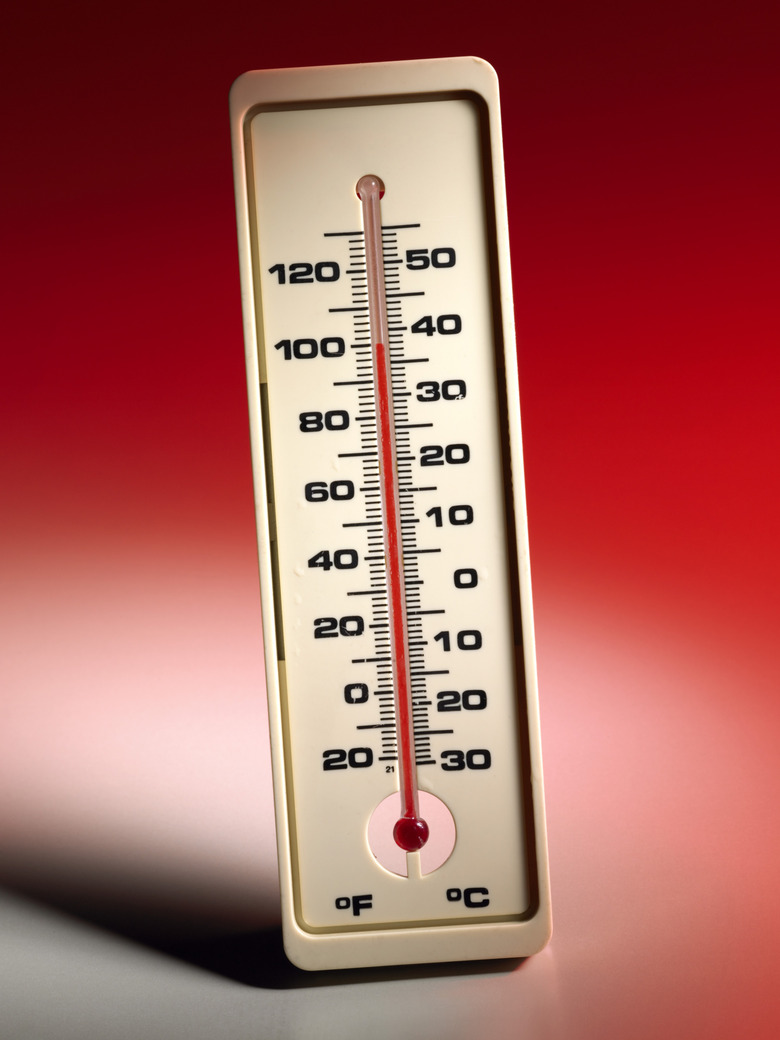Three Variables That Can Affect Activities Of An Enzyme
Enzymes are protein molecules that take on a particular shape which enables them to speed up biochemical reactions within the body, therefore behaving as a catalyst. The rate at which an enzyme works is highly dependent upon a number of key variables and these include temperature, pH and concentration.
Temperature
Temperature
Enzyme activity has a strong relationship with temperature. As temperature increases, enzyme activity also increases because there is an increase in the number of collisions between the reacting molecules and the enzymes. Increasing the temperature further leads to a peak in enzyme activity. For human enzymes, this peak temperature is approximately 98.6 degrees Fahrenheit, which is our body temperature. Any further increase in temperature leads to a decrease in the enzyme activity. This is due to the denaturing of the enzyme protein, which is the breaking of molecular bonds within the protein. When those bonds are broken, the shape of the enzyme changes and it not longer properly functions as a catalyst.
pH
pH
The measure of the acidity or alkalinity of a solution is referred to as pH. Enzymes have evolved to operate at specific pH values and deviation from this value will lead to a decrease in enzyme activity. This is because a high or low pH can denature enzymes just as high temperatures do. Most of our bodily fluids have a neutral pH of approximately 7.2, therefore human enzymes have the highest activity at this pH.
Concentration of Substrate
Concentration of Substrate
A substrate is a molecule that an enzyme operates upon. Since enzymes can only bind to a single substrate at a time, their activity is dependent upon substrate concentration. An initial increase in substrate concentration will lead to an increase in enzyme activity since it means more substrates and enzymes can pair-up. A further increase in the substrate concentration usually will not increase activity because the enzymes are saturated with substrate. In other words, there is a line the substrates must wait in before reaching an enzyme.
Concentration of Enzyme
Concentration of Enzyme
Enzyme activity is also highly dependent upon its own molecular concentration. Given an arbitrarily large concentration of substrate at constant pH and temperature, any increase in enzyme concentration leads to an increase in activity. This leads to a linear relationship in which enzyme activity is directly proportional to enzyme concentration.
Cite This Article
MLA
Markings, Samuel. "Three Variables That Can Affect Activities Of An Enzyme" sciencing.com, https://www.sciencing.com/three-variables-can-affect-activities-enzyme-9473/. 24 April 2017.
APA
Markings, Samuel. (2017, April 24). Three Variables That Can Affect Activities Of An Enzyme. sciencing.com. Retrieved from https://www.sciencing.com/three-variables-can-affect-activities-enzyme-9473/
Chicago
Markings, Samuel. Three Variables That Can Affect Activities Of An Enzyme last modified August 30, 2022. https://www.sciencing.com/three-variables-can-affect-activities-enzyme-9473/
